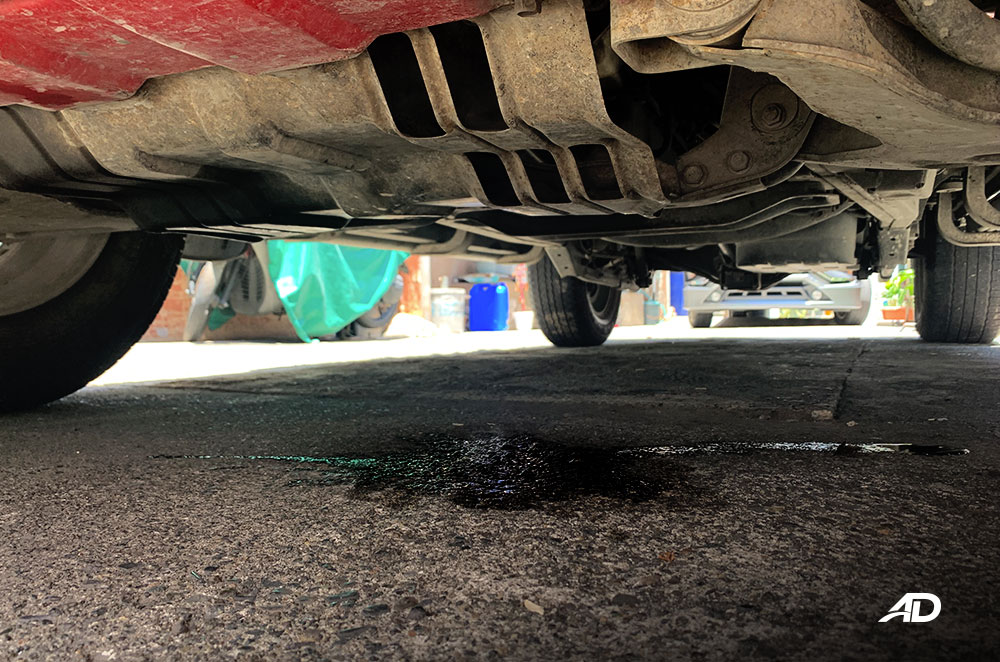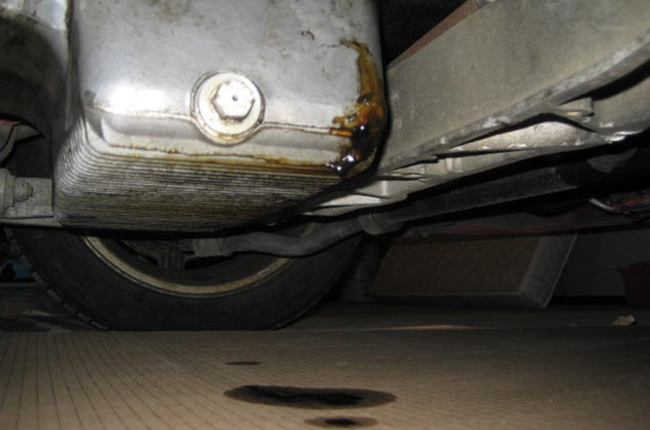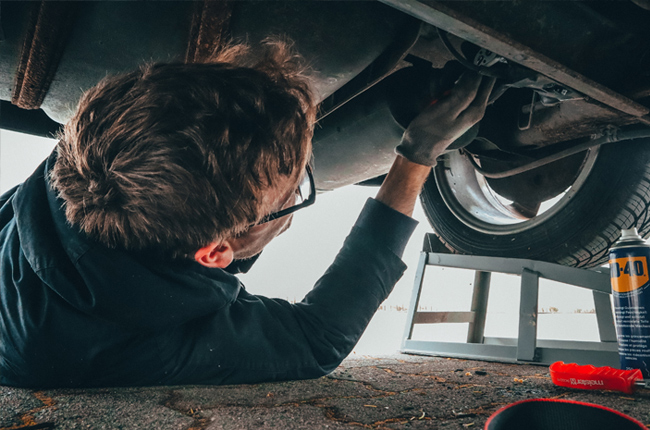
An oil leak in your car’s engine is something you really shouldn't ignore as it can be hazardous. Aside from engine failure, oil leaks are also a fire risk in your engine bay, or it can pose a hazard for other motorists on the road, given enough oil spillage. That said, fixing oil leaks should be prioritized, and taking good care of your car is a must. It doesn’t always take a trained mechanic to figure out the proper solution for this, there are actually some ways for you to stop engine oil leaks yourself. Before you do that, you must first identify its causes and find the source of the leak. Just follow these tips and guidelines and you’ll have that engine leak on your car will be fixed in no time.
What are the causes of an oil leak?

- Time - As you use your car, your oil can lose its viscosity due to numerous heat cycles and oxidation. Time can also age your gaskets, hoses, and other rubber components that are there to keep oil and other fluids in their respective reservoirs and chambers.
- Incorrect installation - There are some instances when one of the gaskets or parts of your car is improperly installed. That means the oil pan or valve cover could either be over-tightened or tightness is not evenly distributed. It could also be the improper attachment of the oil filter, and if it’s loose, your car might experience a leak there. You could also have a faulty seal around your oil pump or a hose clamp on an oil line that is improperly fitted.
- Physical damage or accidents - Road debris can damage your car's oil pans and gaskets. As rough roads could possibly lead to a hole that can cause an oil pan leak. Stone chips, rocks, and other road accidents have the probability of damaging your oil pans and gaskets.
- Heat - While engines and oil have an optimal operating temperature, too much heat will cause your engine oil to thin out prematurely and can cause it to seep out of your oil seals. Conversely, too much heat will also prematurely age your car’s gaskets, oil seals, and hoses.
- Too much engine oil - Too much of a good thing can be bad, and in the case of oil, too much of it could cause an overflow. There’s possibly too much oil into your car’s engine which could come out of the upper extremities of your engine, namely through valves and other breather hoses.
Common leak sites

After going through the different causes of oil leaks, perhaps, you already know the common sites or areas where oil leaks occur. The following include the broken or worn-out gaskets and the rings or valve seals.
- Gaskets and seals
- Oil pan
- Oil lines
- Oil filter
- Oil drain bolt
How to find an oil leak

After going through the basics, you must now identify if your car is really leaking oil before you find the remedy for it. Note that it is also likely that the oil on your vehicle is the result of road grime and other cars' fluid—not necessarily your cars.
1. Investigate the leak
Is it even an oil leak? Before you conclude that your car is dripping in oil, you must first see it yourself. Kindly examine the drips under your car, lay down newspaper or a white plastic plate, and try to catch some of the fluid. If you see oil on a surface, try to blot it with paper towels to see the color and the characteristics of the leaking fluid. A slow leak would typically seep out, while a faster leak will drip.
Also, check the floor of where your car was parked. Try and park on a dry surface and leave your car there for a while—do this the next time you go to a mall or leave your car in a parking building. Before you leave, try and check the parking slot for any oil and make sure it is clean. Following that, park your car, then carry on your day. Before you leave for home or another excursion, check the underside of your car and the parking slot. To add, be responsible and try to clean up the oil if you can. Paper towels are perfect for doing this—not only do you get a sample of the fluid on the ground, but you also clean up for the next person who will park in the same slot.
Engine oil is an amber color, feels thin and slippery, and has a strong chemical odor, while older oil can be dark brown to black, with a gritty or gunky texture. Both of these are the ones' should look for if you suspect an oil leak. Do take note that there are other fluids that could possibly leak under your car. If it's clear and yellow then it's the brake fluid. If it's color green, bright orange, or pink and is not sticky, then it's probably your windshield washer fluid.
2. Check your fluid levels
It’s important to regularly check your fluid levels. You can inspect your oil level by using the dipstick. If you find that your oil level is low, either you haven’t changed your oil in a while, or there is a leak. You can tell that your car needs an oil change if your level is low, but if you just got an oil change not too long ago and you’re running low, it could possibly be a leak.
3. Locate the source of the leak
You can consult a mechanic to do this, or if you’re willing to do a little dirty work, you can also opt to discover the source of the leak on your own by playing detective. Here are some steps to follow in locating the source of the oil leak.
- Turn the engine off and shine a bright light into the engine area.
- Is oil pretty much everywhere? If so, it could be a slow leak due to the engine's gaskets.
- After resting for a few seconds, turn on the engine again and thoroughly inspect your car. If the oil starts wildly spraying, then it's going past a worn crankshaft or seal.
4. Consult an expert
Again, if you can’t commit to the dirty work, still, you can always consult a motor oil expert or mechanic to do the work for you.
How to repair your car’s engine oil leak

After enumerating the different ways on how to locate the source of a car’s oil leak, here are some solutions and repairs that can be done in order to stop the leak. In order to start your DIY session, the only thing you will need is a car jack, jack stands, torque wrench, and some special additives or replacement parts.
1. Fix it with tools
All you’re going to need are some hand tools, a torque wrench, a car jack, and stands or some ramps. Now, here the steps in fixing an oil pan leak:
- First, jack up the car so you can safely access the oil pan. Once you've done that, check for loose bolts on the oil pan, if you happen to find any then tighten the following bolts.
- Also, kindly check the bolts of the timing belt and valve covers, tighten them up if necessary.
- Do take note that specific car models require you to tighten bolts in a certain pattern to a specific torque specification.
2. Use an additive to stop the leak
Putting in additives can soften and condition your car’s rubber seals to stop and prevent further automotive leaks. This is why your car’s regular oil change is important.
3. Bring your car to the auto repair shop
Of course, if you’re really not that skilled or confident enough to do this, then it’s better to bring your car to your trusted auto repair shop.
How to prevent oil leaks

It is important to note that the oil change or period maintenance schedule of your car must be followed religiously in order to avoid conflicts such as this. Remember, an engine oil prolongs the life of your car’s engine, and regular cleaning can definitely protect it from extra wear, tear, friction, and sludge build-up. Therefore, preventing your car from having engine oil leaks.
Latest Features
-
The 6 things every Ford Ranger must pass before it leaves the factory / Featured Article
Every Ford Ranger, from the base model to the Ranger Raptor, goes through a full inspection process before it leaves the factory. This includes six steps that make sure it’s ready to drive a...
-
Which GAC AION EV is best for your everyday lifestyle? / Featured Article
The GAC AION lineup has something for everyone, maybe you're after space, speed, or just a smooth city drive. Here's a quick breakdown of which model might work best for your day-to-day life...
-
The AutoDeal Awards 2024: Celebrating excellence in the auto Industry / Featured Article
The AutoDeal Awards 2024: Celebrating excellence in the auto Industry
Popular Articles
-
Cheapest cars under P700,000 in the Philippines
Jerome Tresvalles · Sep 02, 2024
-
First car or next car, the Ford EcoSport is a tough package to beat
Jun 18, 2021
-
Car Maintenance checklist and guide – here’s everything you need to know
Earl Lee · Jan 12, 2021
-
Most fuel efficient family cars in the Philippines
Bryan Aaron Rivera · Nov 27, 2020
-
2021 Geely Okavango — Everything you need to know
Joey Deriquito · Nov 19, 2020
-
Family cars in the Philippines with the biggest trunks
Sep 20, 2023
-
Head to head: Toyota Rush vs. Suzuki XL7
Joey Deriquito · Oct 28, 2020
-
Why oil changes are important for your car
Earl Lee · Nov 10, 2020
-
2021 Kia Stonic — What you need to know about it
Joey Deriquito · Oct 16, 2020
-
Top 7 tips for buying a used car in the Philippines
Joey Deriquito · Nov 26, 2020



